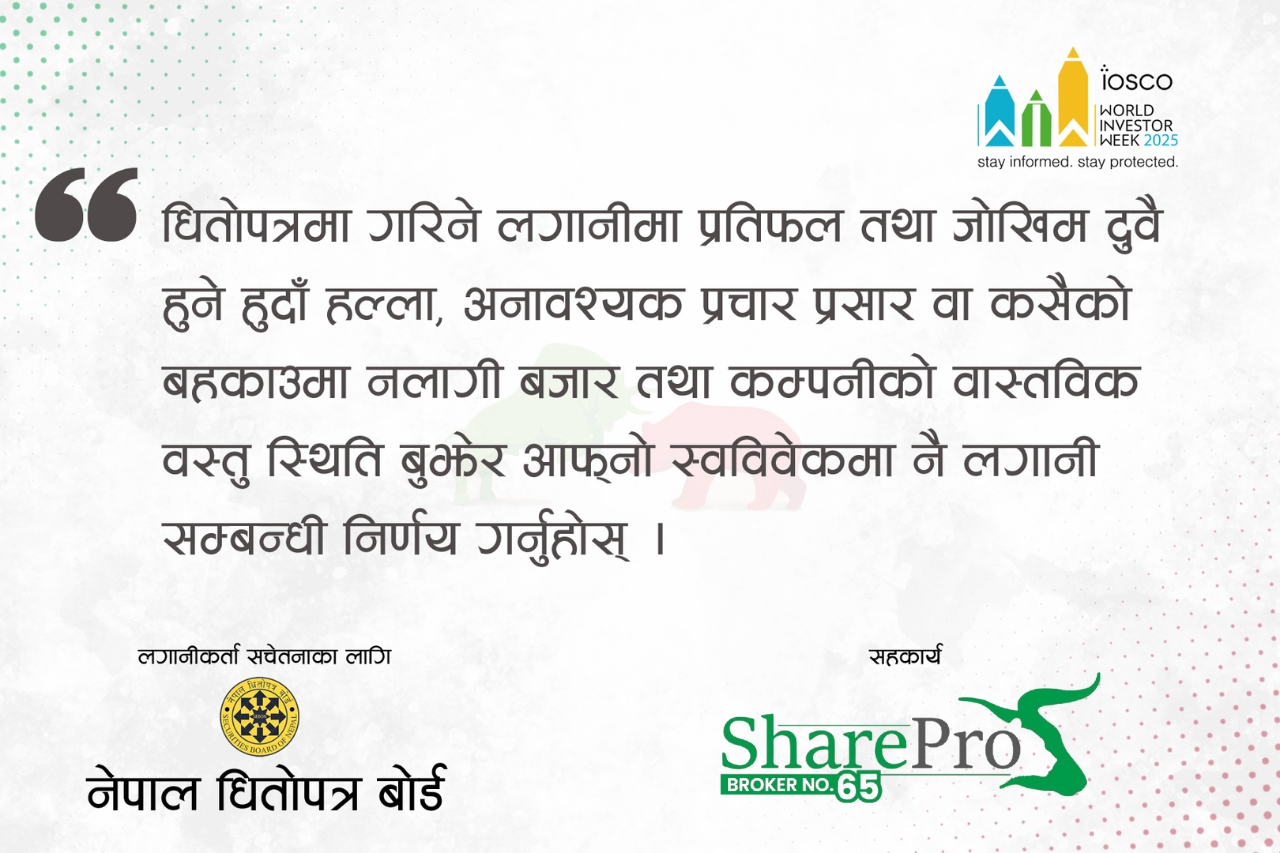Second Wave of Pandemic and Commercial Banks Still Slashing Interest Rates; Will NEPSE Benefit from Rising Liquidity?
Tue, Apr 13, 2021 12:24 PM on Stock Market, Interest Rates, Latest,

The discussion on liquidity has been a hot topic in the investment community today. For a quick comparison, there was excess liquidity of Rs. 51 Arba one day before the nationwide lockdown was imposed. During the pandemic, the liquidity in the economy was as high as Rs. 200 Arba. Fast forward to the present, the central bank has recorded excess liquidity of Rs. 48.5 Arba on Chaitra 23, 2077.
When Sharesansar interviewed Mr. Narayan Prasad Pokhrel, Deputy Spokesperson And Information Officer of Nepal Rastra Bank a few days ago, Pokhrel said he is certain about one thing: the central bank will never allow liquidity to be as high as the time when businesses were shut down during the pandemic.
However, it seems that the second phase of Covid-19 is starting to hit the country. After a dramatic decline in Covid-19 cases, Nepal has been seeing a steady rise in the number of infections lately. Thirteen deaths have been reported in the last 24 hours. Doctors warn that health facilities will be overwhelmed within a few days if containment measures are not taken to slow down the virus spread. (reference: The Kathmandu Post)
As such, it is not only the country's liquidity that can go south if the second wave hits. Economic activities will be brought to a halt if another lockdown is imposed in the country, and the nation's banking system will once again receive a surge in deposits that it can direct nowhere.
The investors' community had anticipated that liquidity would gradually retrace to its normal state in the upcoming new year. However, the interest rates update published by banks and financial institutions today tells otherwise.
Interest rates have mostly gone down
The industry giant Nabil Bank has given a significant slashing on its interest rates profile. As of now, the bank paid interest in the range of 2.51% to 4.51% for savings. Effective from the first day of the upcoming new year, the bank will only pay in the range of 1.51% to 3.51%. Mega Bank has also made a significant reduction in its interest rates profile on savings. While the previous range was (3.5% - 5.5%) on savings, the range maintained in the first month of the new year will be only (1.75% - 3.5%). Similarly, NMB Bank previously paid interest in the range of 3.1% to 5.1% for savings. Now, the bank will pay from 2% to 4%.
Nonetheless, Nepal SBI Bank is an exception. The commercial bank has actually increased its interest rates for savings from (2% - 3%) in the previous month to (3% - 3.16%) effective from tomorrow.
Interest rates on fixed deposits have mostly been reduced, with exceptions
Interest rates on fixed deposits have gone down too. Nabil Bank previously gave interest payments in the range of 6.01% to 7.51% to individuals for fixed deposits. Now, the bank will only pay in the range of 5.01% to 6.51%. Similarly, NMB Bank previously paid interest in the range of 5.75% to 8% to individuals for fixed deposits. Now, the bank will only pay 5% to 7% annual interest payments for the same deposit instruments. For institutions, NMB bank would pay as high as 8% for fixed deposits. Now, they will only get a maximum of 7% interest payment p.a.
Base rates in commercial banks have mostly been retained or decreased. While Nabil Bank used the base rate of 5.58% maintained as of Magh, the bank now maintains the base rate of 5.49% as of Falgun. As an exception, Nepal SBI Bank has seen a slight increase in the base rate, from 7.31% maintained in Magh to 7.32% maintained in Falgun.
What this means for NEPSE
Nepal's capital market has witnessed an explicit bull trend in the year 2077. This was caused in large by the excess liquidity that piled in the nation's banking system during the pandemic. When the nation's economy and liquidity balance was just begun to recover, news of rising virus cases is certainly a contradictory statement to investors' expectations. Furthermore, commercial banks have slashed interest rates in a way they had not done after the rates were at their lowest during the pandemic.
In the world of macroeconomics and finance, no two events are exactly the same. There are numerous constraints that may come to play. As such, the best decision for an investor would be to observe with a watchful eye as the situation unfolds.



